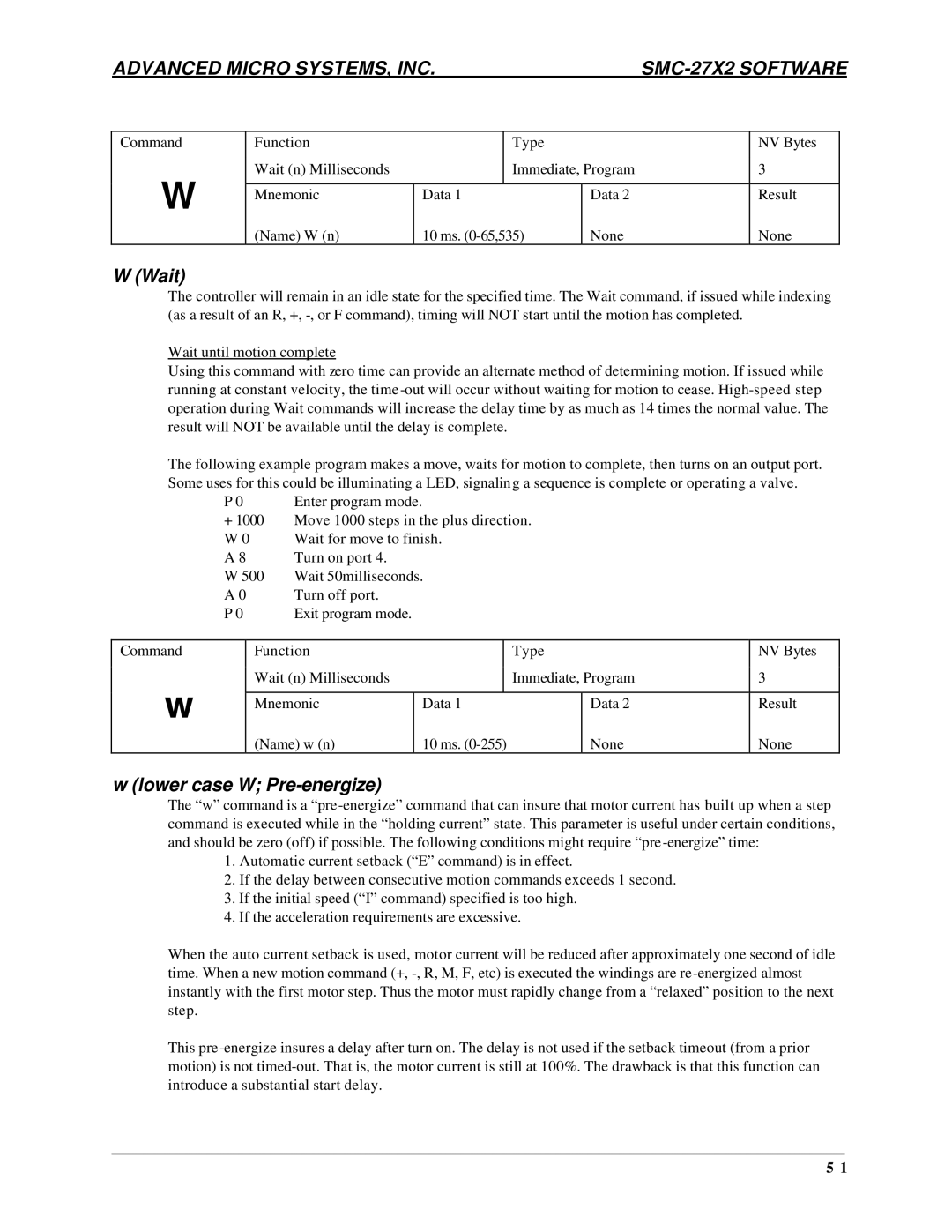ADVANCED MICRO SYSTEMS, INC. |
| ||||||
|
|
|
|
|
|
|
|
Command | Function |
| Type |
|
| NV Bytes |
|
W | Wait (n) Milliseconds |
| Immediate, Program |
| 3 |
| |
|
|
|
|
|
|
| |
Mnemonic | Data 1 | Data 2 |
| Result |
| ||
|
|
| |||||
| (Name) W (n) | 10 ms. | None |
| None |
| |
W (Wait)
The controller will remain in an idle state for the specified time. The Wait command, if issued while indexing (as a result of an R, +,
Wait until motion complete
Using this command with zero time can provide an alternate method of determining motion. If issued while running at constant velocity, the time
The following example program makes a move, waits for motion to complete, then turns on an output port. Some uses for this could be illuminating a LED, signaling a sequence is complete or operating a valve.
P 0 | Enter program mode. |
+1000 Move 1000 steps in the plus direction.
W 0 Wait for move to finish.
A 8 Turn on port 4.
W 500 Wait 50milliseconds.
A 0 Turn off port.
P 0 | Exit program mode. |
|
|
|
|
|
|
|
|
|
|
|
|
Command | Function |
|
| Type | NV Bytes | |
w | Wait (n) Milliseconds |
|
| Immediate, Program | 3 | |
|
|
|
|
|
| |
Mnemonic | Data 1 |
| Data 2 | Result | ||
|
| |||||
| (Name) w (n) | 10 ms. |
| None | None | |
w (lower case W; Pre-energize)
The “w” command is a
1.Automatic current setback (“E” command) is in effect.
2.If the delay between consecutive motion commands exceeds 1 second.
3.If the initial speed (“I” command) specified is too high.
4.If the acceleration requirements are excessive.
When the auto current setback is used, motor current will be reduced after approximately one second of idle time. When a new motion command (+,
This
5 1
